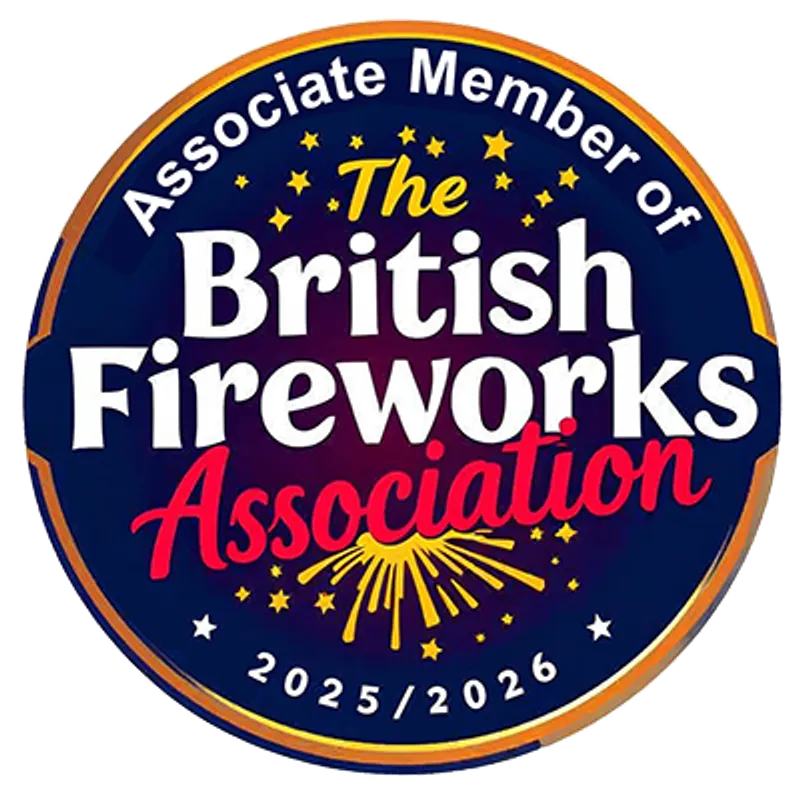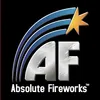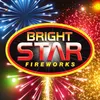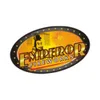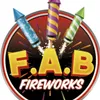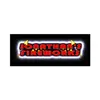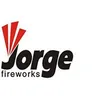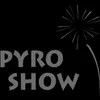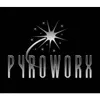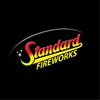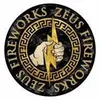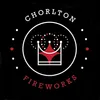Category 1 to Category 4 Fireworks: What to Expect
Spend a little time researching fireworks and you’ll see the terms CAT 1, F2, and Category 3 being passed around. These are probably the most important details you need to look out for when shopping for fireworks because the category a firework is in will specify where it can be used safely and legally.
Before launching into which types of fireworks you plan to use, make sure you keep your guests safe and stay on the right side of the law by identifying which categories of fireworks you can purchase.
Category 1 Fireworks

Minimum safe viewing distance: 1+ metre
Category 1 fireworks are the smallest and least powerful fireworks available. Each Category 1 firework’s packaging should specify exactly what safe distance to retreat to when using it. Most often this will be an arm’s length (for example, one of the safety rules for sparklers is to hold them at arm’s length), or a metre. Quite often Category 1 fireworks involve minimal combustion and often can be used indoors or in confined spaces because they do not present a high hazard.
Legal age to purchase: 18 with some exceptions
UK Fireworks age laws say that fireworks can only be purchased by people over the age of 18, regardless of which category they are in (with category 4 only available to professionals). An exception is made for Fun Snaps and Chinese Lanterns which are both Category 1 fireworks and can be purchased by people who are 16 or older.
Where to use: Because of their smaller safe retreat distance, Category 1 fireworks are very versatile. They can be used in all of the places that larger fireworks can be used such as in gardens or, in pre-agreed locations outdoors (be aware that it is an offence to use sparklers in public spaces). The fact that Category 1 fireworks are generally safe to use in confined spaces means that you can also enjoy them in very small gardens or even on balconies.
Some Category 1 fireworks can be used indoors like our Indoor Sparklers and Ice Fountains.
Examples of CAT 1 fireworks:
Category 1 covers a great many different types of fireworks and novelty pyrotechnics. Here are some of the most popular ones:
- Ice Fountains
- Sparklers
- Number Sparkler Cake Toppers
- Cocktail Sparklers
- Smoke Grenades
- Sky Lanterns
Category 2 Fireworks

Minimum safe viewing distance: 8 metres
Technically, the classification for Category 2 fireworks should be a minimum of 8 metres, meaning that some manufacturers specify that the safe distance for a Category 2 firework is 15 metres or even 20 metres. This means that Category 2 fireworks can have a minimum safe viewing distance of anywhere from 8 metres to 20 metres. The firework should always clearly state the minimum safe distance for viewing on the packaging.
Legal age to purchase: 18
Only people aged 18 and over can buy category 2 fireworks. The same rule applies to setting off fireworks which should only be undertaken by an adult over 18.
Where to use: Anywhere outdoors with ample room for every spectator to be at least the minimum distance away from the launch site.
Category 2 fireworks are sometimes called garden fireworks. This is because most gardens have ample space to safely set off these smaller scale fireworks. If your firework has a minimum safe distance of eight metres. For example, you’ll want every person viewing the firework to be able to stand at least eight metres away. So ensure your garden is longer than around 10 metres at its longest point.
Examples of CAT 2 fireworks:
Check out our F2 garden fireworks page for a full list of Category 2 fireworks. Category 2 fireworks cover a wide range of different firework types meaning you won’t be limited in how you want your display to look. We stock totally CAT 2 compliant barrage packs and firework selections that include a variety of different effects for complete firework displays. Here are some of our favourite Category 2 firework packs:
- Afterglow Premium Selection Box
- F2 Barrage & Rocket Garden Mixed Firework Pack
- Standing Ovation Barrage Firework
- Wolf Low Noise Barrage Firework
- Let's Go Roman Candle
- Pink Smoke Grenade WP40
- Shockwave Mine
Category 3 Fireworks

Minimum safe viewing distance: 25 metres
Category 3 fireworks are the most powerful fireworks available to the public. In order to safely use Cat 3 fireworks, your whole audience will need to maintain a distance of 25 metres or more. This means that you can only use Category 3 fireworks in very large gardens or grounds.
Legal age to purchase: 18
Just like other types of fireworks, Cat 3 fireworks can only be sold to and used by people aged 18 or over. Using or selling fireworks illegally can lead to a fine of up to £5,000 or imprisonment. You could also get an on the spot fine of £90.
Where to use: As Cat 3 fireworks require 25 metres minimum safe retreat distance, they are best suited in larger outdoor areas. If you have a smaller garden in a more densely populated area you might not be able to safely set off Category 3 fireworks. If you’re planning a firework display on larger private grounds, an estate, or an event venue, then Category 3 fireworks are ideal. You can put on an extravagant show knowing that everyone has enough space to watch the fireworks without standing in the danger zone. You might choose Cat 3 fireworks for a wedding firework display, for example.
Examples of CAT 3 fireworks:
Category 3 fireworks let you pull out all the stops, putting on an attention-grabbing display that will have everyone awestruck. Although Category 3 fireworks are the most powerful public access fireworks, you can also get some low noise fireworks that produce the same visual effects without such high noise levels. Some examples of Cat 3 fireworks are:
- Tornado Single Ignition Barrage Firework
- Frenzy Single Ignition Barrage Firework
- Sky Candy Compound Firework
- Lightning Hawks Rockets
- Dandy Low Noise Firework
- 200 Shot Firework Barrage
- Twisty Bangers Mine Firework
- Miner’s Revenge Mine Firework
Category 4 Fireworks

Minimum safe viewing distance: unspecified
CAT 4 fireworks are not available to the general public. This is because they are considered too dangerous for untrained people to handle, either because they are too powerful or not yet tested to be put into the correct category so their full potential is unknown. Category 4 fireworks might also be significantly larger in scale and power, meaning that professionals must determine the safe distance between a firework, or firework display, and the people viewing it.
Legal age to purchase: 18+ and with evidence of the appropriate qualifications
A fireworks professional is someone who has been formally trained to handle and use fireworks. This could be a theatrics professional or a fireworks display choreographer. Professional pyrotechnic handlers are usually trained on the Professional Firers Training Scheme under the British Pyrotechnists Association. Retailers request evidence of proof of training when anyone tries to purchase a Category 4 firework.
Where to use:
Category 4 fireworks can be spotted in large-scale firework displays. These will be displays that professionals design and assemble for public viewing. They will almost certainly be activated remotely using a remote igniter that enables the pyrotechnist to make sure each shot goes off exactly when it should. This is especially important if hundreds or even thousands of shots will be going off in a highly curated display with music. It’s also important in helping the pyrotechnist to maintain a safe distance at all times. If you are planning a firework display with Category 2 or 3 fireworks and want to put on a seamless display, you might want to invest in a Smartphone Enabled Firing System.
Category 4 fireworks are used in professional displays marking events all over the world with brilliant light shows, often covered on television. Capital cities put on firework displays for cultural holidays like Diwali, Independence Day, Fireworks Night, and Chinese New Year. Here are a few you might have seen:
The London New Years Eve Fireworks 2020
If you want to watch the London New Years Eve fireworks show, find out what to do to get the best spot in our blog London Fireworks Displays: Everything You Need to Know.
Tokyo Olympics Opening Ceremony 2020
Disneyland Independence Day Celebration
Dubai New Years Eve 2021
Dubai Festival City Diwali Celebrations 2019
Beijing Celebrates New China's 70th Anniversary
350 Barlow Moor Rd
Chorlton
Manchester, M21 8AZ
07810 222123
info@chorltonfireworks.com
